
This 23-minute video provides an introduction to viruses. [Biology playlist: Lesson 19 of 71].
- Subject:
- Biology
- Life Science
- Material Type:
- Lecture
- Provider:
- Khan Academy
- Provider Set:
- Khan Academy
- Author:
- Salman Khan
- Date Added:
- 07/15/2021

This 23-minute video provides an introduction to viruses. [Biology playlist: Lesson 19 of 71].

This learning video introduces high school students to a topic they would not ordinarily study in school, biotechnology, and to different applications of biotechnology that relate to the main theme of the module - making the desert greener. After reviewing traditional methods used for manipulating plants to produce desired traits, students will learn about the methods of making transgenic plants. Dr. Ziad discusses a real world problem that is critical in his country, Jordan, where much of the land is desert. A prerequisite to this video lesson is some background in biology.

In this Nature video, learn about the extraordinary impact that birds have on the agriculture of a small Indian community.

MIT researcher Deb Roy wanted to understand how his infant son learned language -- so he wired up his house with videocameras to catch every moment (with exceptions) of his son's life, then parsed 90,000 hours of home video to watch "gaaaa" slowly turn into "water." Astonishing, data-rich research with deep implications for how we learn. Deb Roy studies how children learn language, and designs machines that learn to communicate in human-like ways. On sabbatical from MIT Media Lab, he's working with the AI company Bluefin Labs. A quiz, thought provoking question, and links for further study are provided to create a lesson around the 20-minute video. Educators may use the platform to easily "Flip" or create their own lesson for use with their students of any age or level.
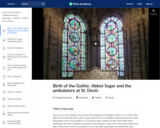
This art history video discussion examines the Ambulatory at the Basilica of Saint Denis, Paris, 1140-44.

This episode focuses on phonological awareness. Reading expert Linda Farrell helps kindergartener Autumn learn to blend two parts of a syllable (onset and rime). Watch how Ms. Farrell gives Autumn explicit practice with onset and rime — a core phonological awareness skill that helps kids recognize and blend sound chunks within syllables

This unit describes the blood, lymphatic and immune systems.

The purpose of this lesson is to teach students about blood and its components while instilling an appreciation of its importance for survival. The lesson takes a step-by-step approach to determining the recipe for blood while introducing students to important laboratory techniques like centrifugation and microscopy, as well as some diseases of cell types found in blood. It also highlights the importance of donating blood by explaining basic physiological concepts and the blood donation procedure.

In this video segment, adapted from NOVA, Dr. Judah Folkman uses the scientific method to discover how cancer cells induce the formation of new blood vessels, which in turn nourish those cancer cells.
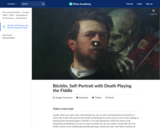
This art history video discussion looks at Arnold Bocklin's "Self-Portrait with Death Playing the Fiddle", 1872, oil on canvas, 75 x 61 cm (Alte Nationalgalerie, Berlin).
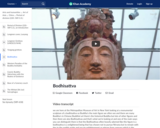
This art history video discussion looks at Bodhisattva, probably Avalokiteshvara (Guanyin), Northern Qi dynasty, c. 550--60, Shanxi Province, China, sandstone with pigments, 13-3/4 feet / 419.1 cm high (Metropolitan Museum of Art, New York).

This art history video discussion looks at Rosa Bonheur's "Plowing in the Nivernais (or The First Dressing)", oil on canvas, 1849 (Musee d'Orsay, Paris).
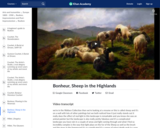
This art history video discussion looks at Rosa Bonheur "Sheep in the Highlands", 1857, oil on canvas (Wallace Collection, London). The Wallace Collection suggests that this painting is likely the result of a trip that the artist made to Scotland the previous year.

This video segment, adapted from NOVA scienceNOW, presents basic concepts of physics behind booming sand dunes. See how surface tension affects potential and kinetic energy and how it all works together to create sound.
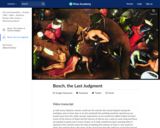
This art history video discussion examines Hieronymus Bosch's "Last Judgment Triptych", 1504-08, Akademie fur bildenden Kunste, Vienna, overall dimensions.
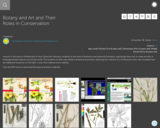
The lessons in this issue of Smithsonian in Your Classroom introduce the work of botanists and botanical illustrators, specifically their race to make records of endangered plant species around the world. “Very little of the world’s flora has been fully studied,” says one Smithsonian botanist, “and time is running out.” In the first lesson, students gets to know six endangered plants. They examine illustrations, photographs, and dried specimens of the plants as they consider this question: If a scientist can take a picture of a plant, are there advantages in having an illustration? They go on to consider some of the big questions that botanists themselves must ask: Which of these species are most in need of conservation efforts? Are any of these plants more worth saving than others?In the second lesson, the students try their own hands at botanical illustration, following the methods of a Smithsonian staff illustrator. All that is required for the lesson are pencils, markers, tracing paper, and access to a photocopier.

The lessons in this issue of Smithsonian in Your Classroom introduce the work of botanists and botanical illustrators, specifically their race to make records of endangered plant species around the world. “Very little of the world’s flora has been fully studied,” says one Smithsonian botanist, “and time is running out.” In the first lesson, students gets to know six endangered plants. They examine illustrations, photographs, and dried specimens of the plants as they consider this question: If a scientist can take a picture of a plant, are there advantages in having an illustration? They go on to consider some of the big questions that botanists themselves must ask: Which of these species are most in need of conservation efforts? Are any of these plants more worth saving than others?In the second lesson, the students try their own hands at botanical illustration, following the methods of a Smithsonian staff illustrator. All that is required for the lesson are pencils, markers, tracing paper, and access to a photocopier.
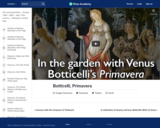
This art history video discussion looks at Botticelli's "La Primavera (Spring)", 1481-1482, tempera on panel, 80 x 123 1/2" (203 x 314), Uffizi, Florence.
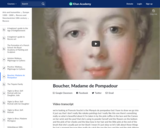
This art history video discussion examines Francois Boucher's "Madame de Pompadour", oil on canvas, 1750 (extention of canvas and additional painting likely added by Boucher later, Fogg Museum.
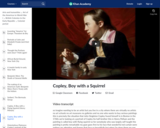
This art history video discussion examines John Singleton Copley's "A Boy with a Flying Squirrel" (Henry Pelham), 1765, 77.15 x 63.82 cm / 30-3/8 x 25-1/8 inches (Museum of Fine Arts, Boston).